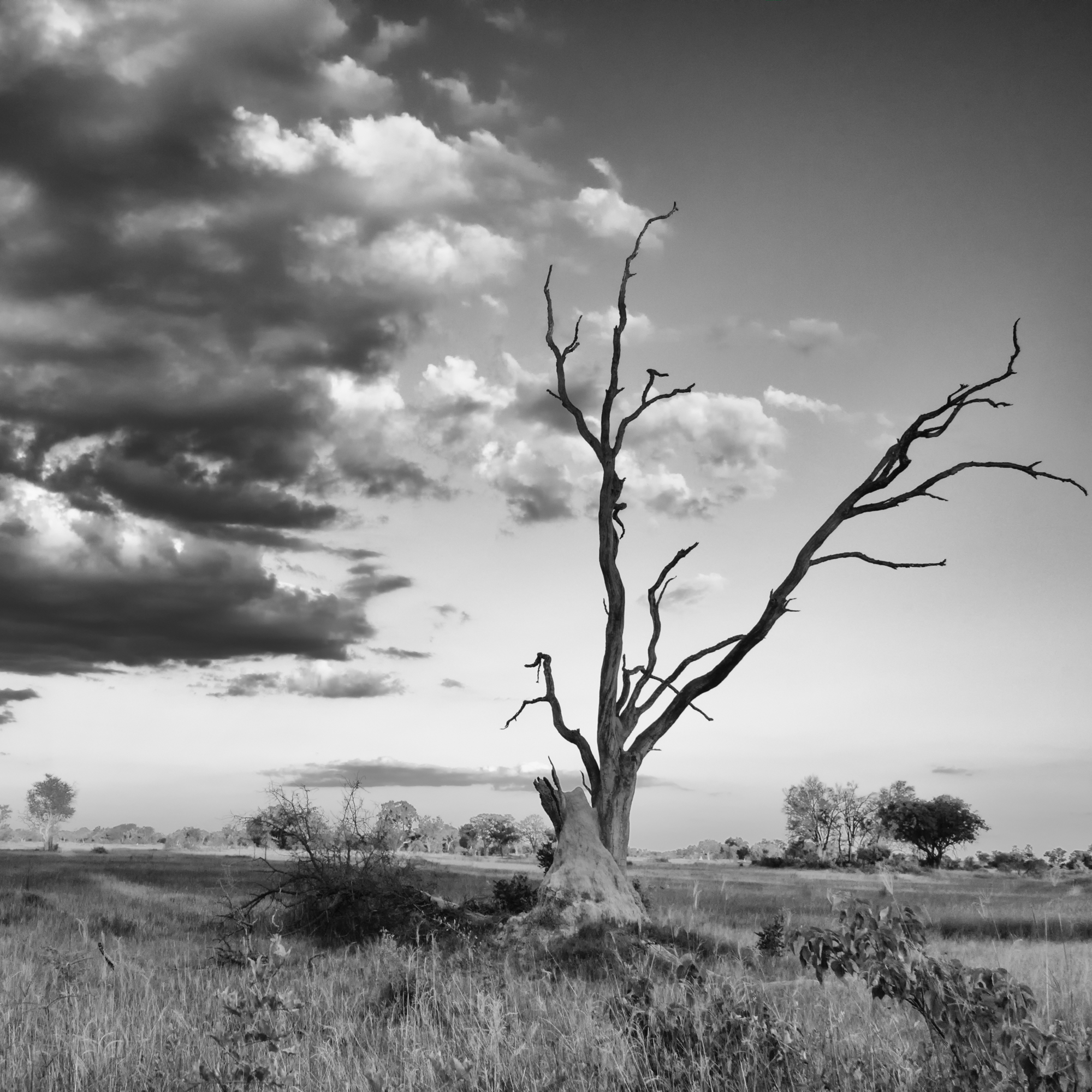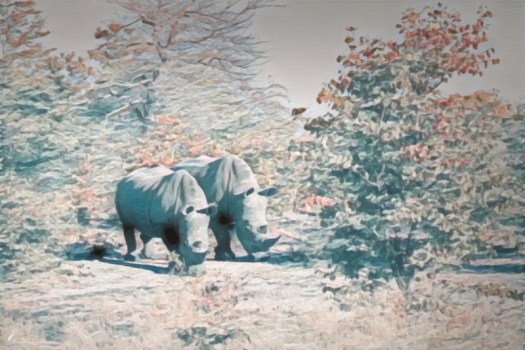



Showcasing the beauty of Mother Nature



I chose to work on my artistic impression images this month. Mostly, I wanted to dive into the new Topaz Studio 2, and also just have a chance to play around and have some fun with my images. Working in Studio 2 proved to be a non-starter, but I certainly had a great time exploring and creating interesting images.
I’m sad to say I didn’t fulfill my goal of actually getting out shooting this month. As the weather is quickly turning colder and darker, I know this has been a real missed opportunity, but I can’t go back in time, only move forward. I am hoping for a combination of free time and decent weather soon so I can actually put my camera to use.
Head on over to my gallery page for more of my favourite images.
I’ve not actually chosen a topic for October; I think it will be a freestyle month. I still have a lot of bird images I would like to work on, and I have been really enjoying playing in Topaz Studio creating my artistic impression images, so we’ll just see what happens. Check back each Sunday for a new post.
This post was originally going to be the big five, but I had images of cheetah and wild dog that I wanted to play around with, so the magnificent seven it is.
One of the reasons I wanted to focus on my photo art this month was to try and learn a bit more about Topaz Studio version 2. I’ve played around with it a bit, and watched some tutorials, but for the workflow I am using, at this stage I will be sticking with version 1. The issue that I was finding is I can’t get files to make a round trip using On1 Photo Raw. I can get the file into Studio 2, and work on it, but the only option for saving is an “Accept” button, which with the workflow I am using, appears to do nothing. I select it, but the file doesn’t get saved, exported or anything else. New software versions are typically a bit buggy, so I’ll give it a few update cycles and then play around with it again and see what happens.
One of the great things about photo editing tutorials is getting the little reminders for things that are outside of the normal workflow. In this case, the reminder was to play around with blending modes when using AI Remix, Impression and textures. For example, the cheetah image below was edited using (amongst other tools) a filter in AI Remix called Neon Rise. But changing the blend mode from normal to luminosity kept the amazing texture that the filter offered, but eliminated the wild and crazy colours for something far more subdued, and suited to the image.
I hope you enjoy the selections below. Wishing you a fantastic week ahead.







You can find some of these images in the Photo Art section of my gallery.
Today is World Rhino Day, so I decided to combine that with my photo art project for the month, and edit some of the rhino images I took on my last trip.
I won’t go on and on about the plight of the rhino, and of the greed, arrogance and ignorance of humans that has fuelled their decline and cluttered news feeds with horrifying photos of poaching. Other people can do that far better than I.
I simply want to live in a world where rhinos can live in peace. And I will hold that thought in my mind and in my heart, and hope that it becomes a reality.
As with all the other posts in this series, these images were created from photos I took, modified primarily using Topaz Studio to create these effects.



As much as I had hoped that my photo art topic would allow me to get comfortable with Topaz Studio version 2, I haven’t actually even tried it yet. Fingers crossed that this week coming up I can make some time to a watch a tutorial or two and get familiar with the program operation, but for now, I have stuck with the original version, and I am really happy with the results of this weeks experiments.
I decided to focus on birds this week, and played around with two basic combinations of software. The sunbird and hornbill were edited primarily using the Topaz AI Remix module, while the rest were done with Impression (along with the usual basic edits to start for tone, cropping, etc.).
Do you have a favourite this week?
I hope you enjoy, and wishing you a great week ahead.










This week, I felt inspired to play around in Topaz Impressions and create some of my artistic impression images. Or as I like to say, what I would paint, if I could paint :).
Next week, I am going to try and work with the new AI Sky Enhancer that Luminar just released.
Wishing everyone a fantastic week ahead!





My month of Topaz Studio is coming to a close. As with my month of Luminar, taking this time to dive into the program has left me feeling a lot more confident using it, and now it is another tool in my photo editing toolbox that I can use to bring out my vision in the images I have created.
Rather than focus on one specific thing for this post, I wanted to share some of my favourite things about the program.
Back when I used Lightroom and Photoshop, Topaz Detail and Clarity were plugins that I would use when I wanted to highlight texture, especially in feathers and fur. The precision contrast and precision detail adjustments are the same tools found in detail and clarity, though they are still available as the plug in versions or as clarity and detail in studio, which give access to all the fabulous presets that those programs had. On this cheetah image below, I decided to use the precision contrast and detail rather than the in studio version of detail and clarity. Since these are sized for the web, some of the fantastic texture of the fur may be a bit lost, but it is definitely there.


I’ve always enjoyed the Topaz Impression and Simplify plug-ins, allowing me to create painterly and whimsical effects to my images. Sometimes over to the top, sometimes subdued, those programs allow me to create something different with my images, and I love the flexibility they give me.

I think my favourite discovery in the Topaz Studio program has been the AI Clear adjustment, and it is one I am absolutely going to purchase to make sure I have it available to me. Many times I find myself out and about with a great scene in front of me, or a moment I want to remember, but the light is fading or there are deep shadows or perhaps fog (sometimes all of the above). I have found that the AI Clear adjustment can really get images like these back from looking grainy and soft, to full of detail and life. It’s just one step in the editing process, but it certainly is a powerful tool.


I have really been loving the ease of adding my watermark to my images; it is certainly less cumbersome than that current way I have to do so in On1. One of the drawbacks I have found with Topaz Studio is not being able to resize and export directly from the program. It means that for images being posted to the blog or my Instagram page, they always need a round trip back to On1 in order to be resized and exported. Not a deal breaker at all, but just adding an extra step to the process.
If you don’t have it already, I would absolutely recommend downloading Studio and trying it out. Given that the program is free to use with several adjustments, and there are 30 day trials for all the others, there really is nothing to lose (except maybe a little space on your hard drive) to give it a go.
I hope you’ve enjoyed my take on the program.
Wishing everyone a great week ahead!
So far I have been concentrating on learning to effectively use Topaz Studio for standard editing, like I would do through On1 Photo Raw or Luminar. I still have a ways to go to figure out exactly how this would work into my regular workflow, but I decided to do a departure this week and play around with photo art instead. I watched a few tutorials during the week and one of them featured a new (to me) adjustment called AI Remix. The effects that the presenter was creating looked really interesting, so that’s where my focus has been this week, along with the more familiar to me adjustments through impression and simplify.
This first image was shot with my Panasonic camera whilst in Botswana, and it was after the sun went down so the image was incredibly dark and noisy; completely unusable as a regular photograph (just being 100% honest). But, I loved the posture of these two bull elephants jostling in the shallows of the Boteti River, and knew I could make something fun with the image, even if it wasn’t an something that I would traditionally mark as a keeper.

This next image is of a goliath heron. I wanted to simplify the details without losing all the texture and pattern of the feathers, and bring out colours and tones that reminded me of old film images. The result looks like a cross between a painting and a snapshot from an old point and shoot camera, but for me the image works. Perhaps because it brings back memories of the type of pictures I would see around cottage properties when I was younger.

This last image is bit hectic, but it fits with the subject, the amazing African Wild Dog. The combination of adjustments I used diffused the background significantly, but in doing so brought out repeating patterns of triangles in the vegetation which corresponds with the triangular shape of the dog’s ears. It almost feels like the dog rushed through a huge pile of fallen leaves and quickly laid down, while the leaves slowly drifted back down to the ground.

Creating painterly images or abstracts from photos isn’t everyone’s cup of tea, but it is something I enjoy playing around with once in a while. Topaz Studio definitely provides a lot of different options to use to create these types of images. Because I own the Topaz plug-in collection, I have access to a lot of these tools that aren’t available within the free portion of the software. The AI Remix adjustment is one that I currently have on trial, and it’s something I would need to experiment more with to figure out if it is a tool I’ll want to have available once the trial period is over.
